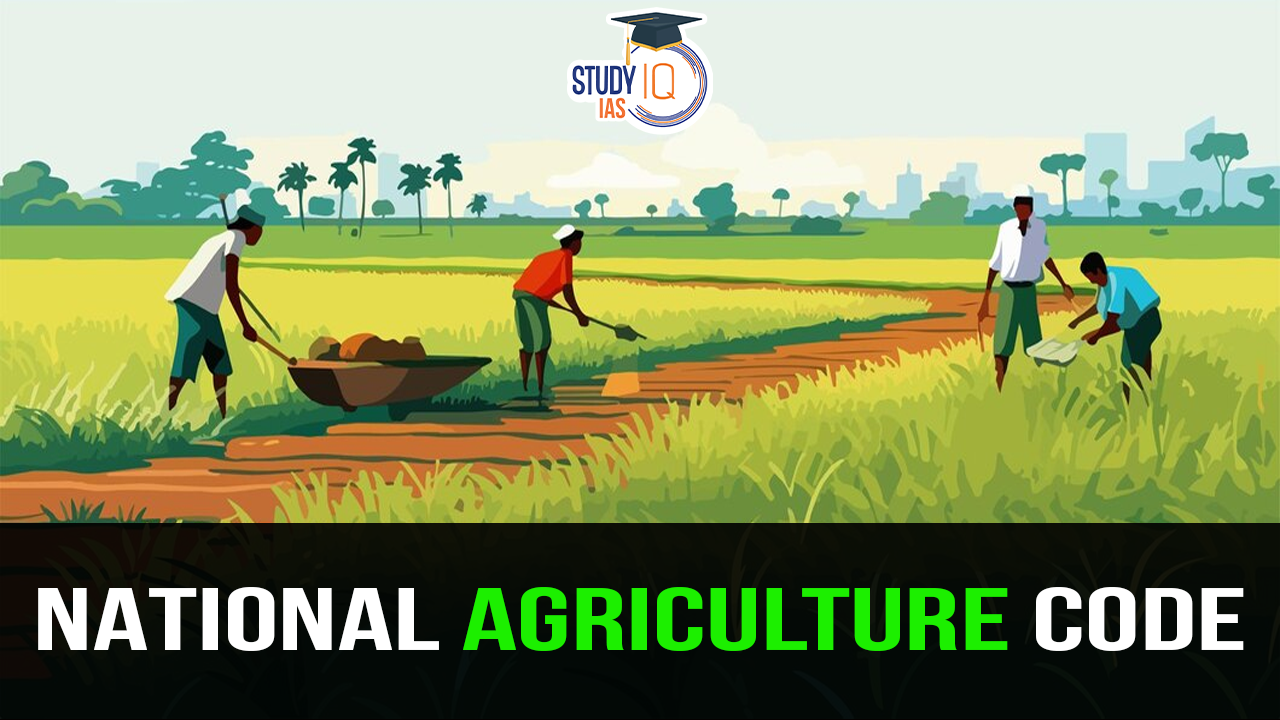Table of Contents
What is the National Agriculture Code (NAC)?
- It will cover the entire agriculture cycle, and will also contain a guidance note for future standardisation.
- The code will have 2 parts:
-
- It will contain general principles for all crops
- It will deal with crop-specific standards for the likes of paddy, wheat, oilseeds, and pulses.
- It will serve as a guide for farmers, agriculture universities, and officials involved in the field.
- Objectives:
- Develop a national code that offers recommendations for agricultural practices, considering agroclimatic zones, crop types, socio-economic diversity, and all elements of the agri-food value chain.
- Promote a quality culture in Indian agriculture by providing a reference for policymakers, agricultural departments, and regulators to incorporate NAC provisions in schemes, policies, and regulations.
- Provide farmers with a comprehensive guide for informed decision-making in agricultural practices.
- Integrate relevant Indian Standards with recommended agricultural practices.
- Address broader agricultural concerns such as SMART farming, sustainability, traceability, and documentation.
- Support capacity-building programs organised by agricultural extension services and civil society organisations.
Need For NAC
- The Bureau of Indian Standards (BIS) is the national body responsible for setting standards across various economic sectors.
- In the field of agriculture, it has already established standards for machinery such as tractors and harvesters, as well as inputs like fertilizers and pesticides.
- However, there are still many areas not covered by the BIS standards.
- Example: There is no standard for agriculture practices like preparation of fields, micro irrigation and water use.
What will the NAC cover?
- All agriculture processes and post-harvest operations: Crop selection, land preparation, sowing/transplanting, irrigation/drainage, soil health management, plant health management, harvesting/threshing, primary processing, post-harvest, sustainability, and record maintenance.
- Standards for input management, like use of chemical fertilisers, pesticides, and weedicides, as well as standards for crop storage and traceability.
- All new and emerging areas like natural farming and organic farming, as well as the use of Internet-of-Things (IoT) in the field of agriculture.
Standardised Agriculture Demonstration Farms (SADF)
- The BIS is also setting up SADFs at selected agricultural institutes to experiment with and implement agricultural practices and technologies according to Indian Standards.
- These farms will be used for training officials involved in agricultural extension, farmers, and industry representatives.
- The BIS plans to sign Memorandums of Understanding (MoUs) with premier agricultural institutes for the development of SADFs.
- Ten institutes have been identified, and two MoUs have already been signed, including one with Govind Ballabh Pant University of Agriculture and Technology (GBPUAT) in Pantnagar.
- BIS will provide financial assistance for the setup of these farms, following China’s successful implementation of such initiatives.


 Why India Needs Its Own Economic Model?
Why India Needs Its Own Economic Model?
 Challenges in India’s Airline Sector: ...
Challenges in India’s Airline Sector: ...
 Forest Conservation Act, 1980: Objective...
Forest Conservation Act, 1980: Objective...

























